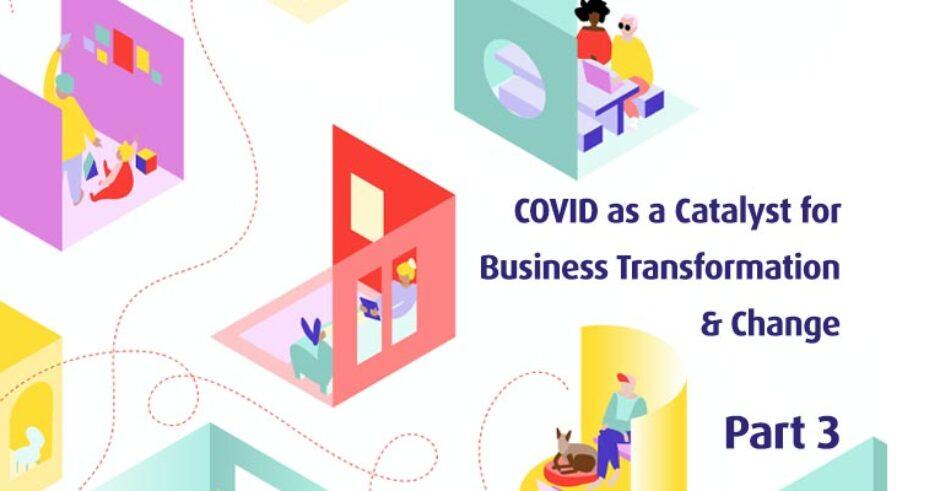Are you being on-point in your communication? Is communication even worth thinking about?
Communication has always been talked about… It is certainly not a new topic… The question is, why now?
When the COVID pandemic hit in 2020, the impact on organisations was significant. Funding was cut, projects stopped, staff laid off, in addition to the stress and anxiety of possibly losing one’s job and having to adjust to the new way of working and interacting virtually.
On the order hand, in some organisations, COVID has brought a platform of urgency, accelerated the pace of projects, brought change to the spotlight and brought projects back to life.
In 2021, most organizations have further realised the need to change quicker, the need to improve the ability to deal with disruption, work harder to retain our customers and bring more focus into becoming more customer-centric to continue to be competitive in the market.
I believe that it is now more critical than ever to create meaningful change, a change that sticks, a change that is understood and accepted. We are in the golden era of change and organizations have their arms wide open to making changes that stick.
To bring change home which is to be accepted, sustained and adopted, what we need now more than eve; Is a relentless focus on empathetic, meaningful and on-point communication to enable the change journey to work and be successful.
So what do we have?
Well, the list is not shy of short. Though most was already there, but I believe we now all see it, realize it and they are at the full front of what we do and how we make decisions going forward both as leaders and as organizations.
- Higher levels of uncertainty
- Ambiguity
- Job security is on the line
- Tighter budgets with fewer resources and higher workloads
- The focus on wellbeing, stress and burn out
- The need to maximize Return On Investment (ROI)
- Eliminate rework (reduce it is elimination is hard)
- Can not afford to fail on our projects and programs
This all leads to the one and sole measure of success of our projects and programs which is:
Making Change Stick which is a change that is adopted, sustained, embraced and moves the organization forward instead of going back to old ways of doing things.
The ONE Skill
I would say in the land of overwhelm, overworking, and higher workloads, and given all of what we have on the plate… The one skill that is worth mastering to get you the change that sticks and as a result success is:
Communication
Not any type of communication though, the one critical component to create that change that sticks is On-Point Communication.
The kind of communication that:
- Increases your project success rate by 50%
- Maximize return on investment
- Accelerate your career growth
- And embeds your change
The Bridge
Communication is the bridge between problem and solution. What kind of bridge are you building?
When there is no on-point communication in your projects or programs.
In this case, there seems to be a disconnect between the project team and the stakeholders on the other side.
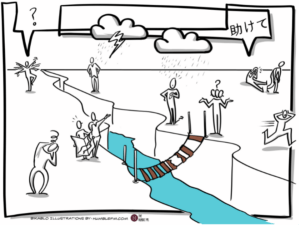
The Symptoms
The Back & Forth: You find yourself in a swing! Attending the same meetings, same agenda, multiple times documents and emails go back and forth resulting in confusion and frustration.
Missing The Point: It seems like there is a mountain between us, the project and the stakeholders. We don’t seem to get each other.
The Land of Silos: Feeling the pressure of delivery crashing down on us and with the deadline looming… We tend to retreat into our own silo in order to minimize interference get stuff done.
Busyness overvalue: In some projects, we tend to see a flood of meetings coming down on the business stakeholders all under the name of planning and locking stakeholders in. Yet it seems like when the actual meeting or workshop takes place, there is a sense of repetition.
Bad surprises!: Project managers hate surprises. After all it affects the ability to predict and control which helps in planning. Yet bad surprises do happen that we weren’t aware of or we were left out.
And a lot more…
So where are you sitting on the scale of “Good” communication
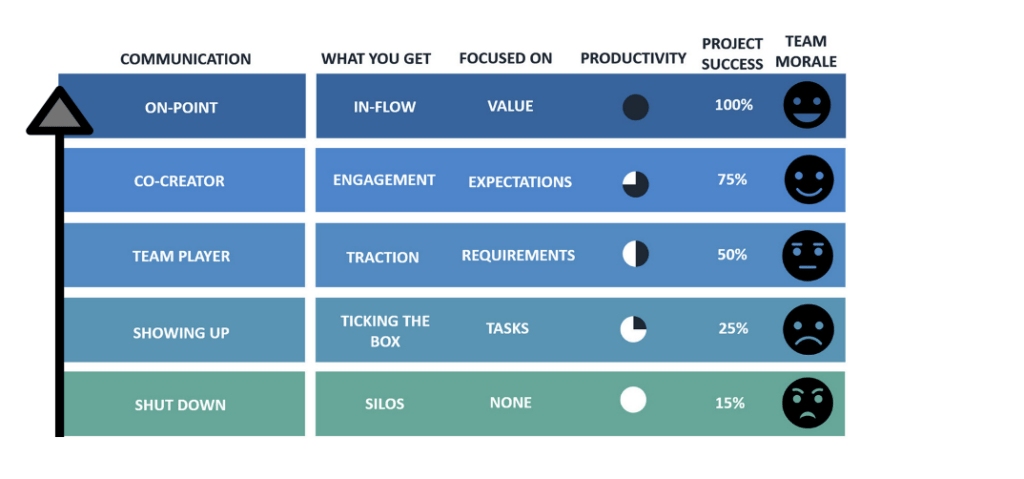
How to get to On-Point Communication?
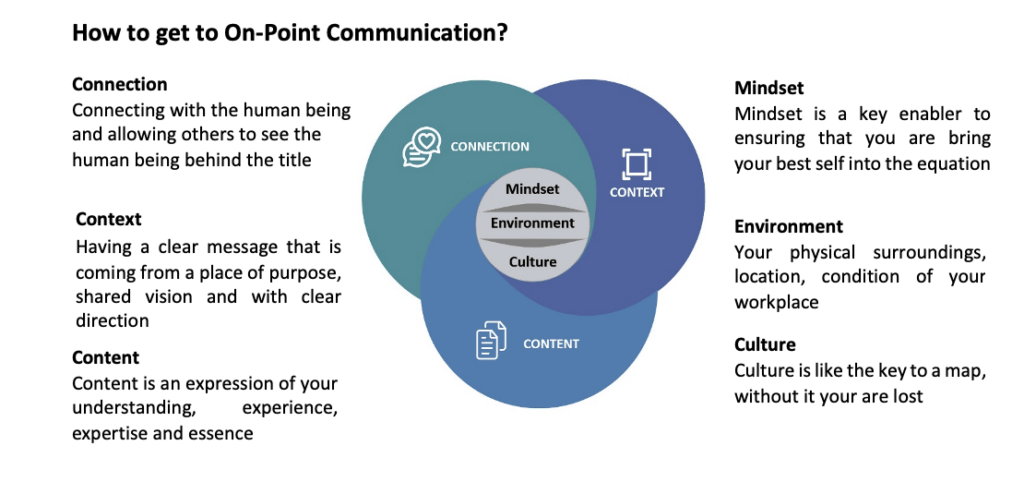
The End Game
With On-Point Communication the design, management, delivery and sustainability of your project outcomes, becomes clearer, more structured and more focused.
And as result, your frameworks, ways of working, methodologies, contractors, vendors and teams can all produced a higher quality outcome that sticks.
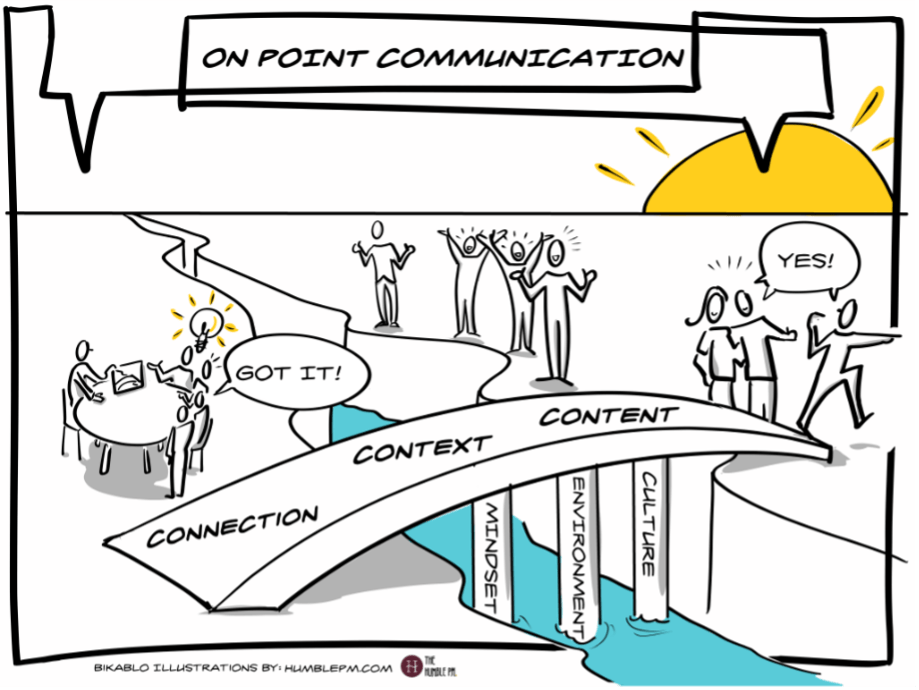
So…
To setup your projects, your teams and your ways of working to success
To up the game of your outcomes to be become of higher quality, sticking, and realizing benefits.
It is all underpinned by your quality of your On-Point Communication.
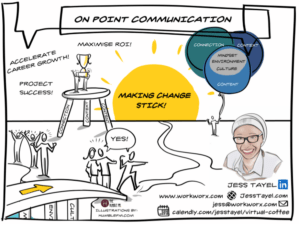
Hope you enjoyed this series of COVID as a catalyst for change.
If you haven’t already you can read Part 1 and Part 2 here.
The images in this article are copyrighted by Jess Tayel and WorkWorx.
This article is exclusive to The Business Transformation Network.

